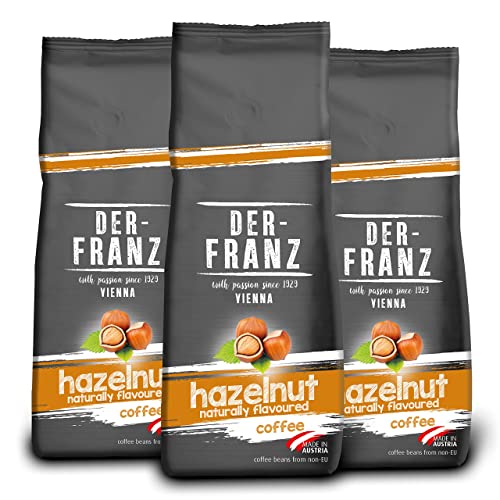10 Apps That Can Help You Manage Your Coffee Beans Types

Coffee Bean Types: Arabica, Robusta, Liberica, and Excelsa
If you're a coffee enthusiast you're likely aware that different beans can produce different flavors. Learn more about four of the most sought-after varieties: Arabica, Robusta, Liberica and Excelsa.
Excelsa beans, which are a variety of Liberica which is grown exclusively in Southeast Asia. They have a fruitier and more tart flavor and are frequently used in blends of beans to give them added depth.
Arabica
Arabica is the world's most popular coffee accounting for 75% of the world's coffee beans produced. Arabica beans have a milder and sweeter flavor than Robusta and are available in a variety of flavour profiles. The aroma and taste of coffee can be affected by the conditions under which it is grown as well as the processing methods used.
The word "coffee" originates from the Arabic word meaning the berry. Coffee beans are actually seeds that sprout inside bright red berries. It is believed ancient Ethiopian shepherds noticed that their goats were energized after eating these fruits. The cultivation of coffee spread quickly across the globe.
Coffee beans can be grown at higher altitudes and are capable of thriving in cold temperatures and lots of rain. This is why Arabica coffee is thought to be the best tasting kind of coffee.
Many specialty coffee shops and roasters focus on sourcing their arabica beans ethically by focusing on fair compensation for farmers as well as sustainable growing practices. These companies typically blend arabica beans to create distinctive coffees that can be used in various brewing methods. Blending allows control over the taste, aroma, body and acidity of coffee. It is generally preferred to achieve a consistent and balanced flavor that is appealing to a broad audience.
Robusta
Robusta beans (Coffea canephora) are the second most popular type of coffee bean that is grown worldwide. They contain more caffeine per bean and are more protected against pests and diseases. They also have higher levels of chlorogenic acids which are antioxidants that occur naturally. These acids can cause oxidation during the brewing process, and can result in undesirable flavors.
The plant itself is more resilient than arabica and is able to grow in less favorable climate conditions and at lower elevations. It can tolerate higher temperatures and thrives in direct sun. It grows faster and produces more coffee per plant than arabica, making it a more cost-effective crop to grow.
Although it might sound odd the fact is that arabica and Robusta beans are often blended to create coffee blends. If you notice names like Uganda or Kenya on the bag of coffee it's possible there is also some robusta.
Most roasters employ a mixture of arabica and coffee beans to cut costs while maintaining quality. In order to preserve the quality of the flavor, it's essential to select a top-quality bean from a source you can trust. This can be achieved by purchasing your beans direct from the farmer.
Liberica
Liberica beans are more or less football shaped, which makes them distinct from other coffee bean varieties. They have a smell that is fruity, floral and smoky. They are often added to other beans to give an extra, stronger flavor.
Liberica coffee beans are available in West Africa, Malaysia (Borneo), and Southeast Asia. They can thrive in low altitudes and withstand humid, hot climates. They are also more resistant to disease than Arabica or Robusta.

These qualities make them ideal for growing at home. Online, you can buy the seeds from various sources. However, it's recommended to purchase the beans from local producers in order to ensure high-quality. The ideal conditions to grow Liberica coffee are fertile deep volcano soils with a pH that is moderately acidic as well as sufficient annual rainfall.
Excelsa is another type of coffee bean. It was initially classified as a distinct species, but has now been reclassified as a Liberica variant. These coffee beans are elongated ovals that grow on large 20 to 30-foot coffee plants that are located at medium altitudes. organic coffee beans have a distinct taste that is both fruity and tart which has made them a popular choice in house blends. They are also lighter in flavor and caffeine than Arabica and Robusta however they still have an unusual richness of flavor.
Excelsa
Excelsa coffee beans aren't as common as Arabica and Robusta yet they're the fourth most popular. They were actually thought to be an entirely different species of coffee until 2006, when they were classified as a synonym for Coffea Liberica var. dewevrei. These days, they're mostly grown in Southeast Asia and account for 7 percent of the world's coffee production. These coffee beans are distinctive with a teardrop shape and carry an intriguing dark flavor. They are frequently used to give blends additional body and a rich, tart taste of ripened fruits.
Arabica beans are the most popular and are renowned for their a sweeter taste. They thrive at higher altitudes and have warm, tropical climates. They are slightly acidic. If brewed correctly and roast they may have notes of chocolate, nuts, or even fruit.
Robusta is the second most popular coffee in the world and accounts for about 40% of all coffee consumed in the world. Robusta beans are more round and smaller, but they have twice as much caffeine as Arabica. They are also bitterer than the other two varieties and have a woody, earthy taste.
After you've learned about the four most commonly used types, it's now time to choose your favorite brew. If you prefer an elegant and delicate taste, choose an arabica bean or a blend of robusta and arabica beans.
